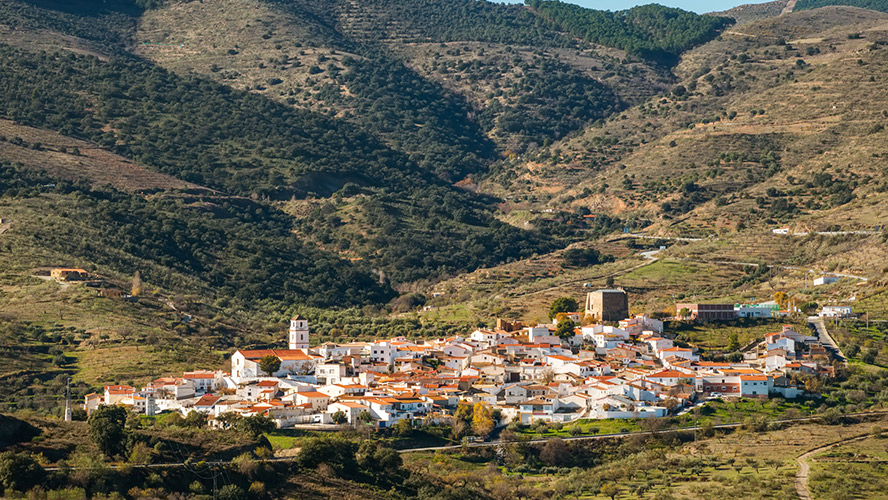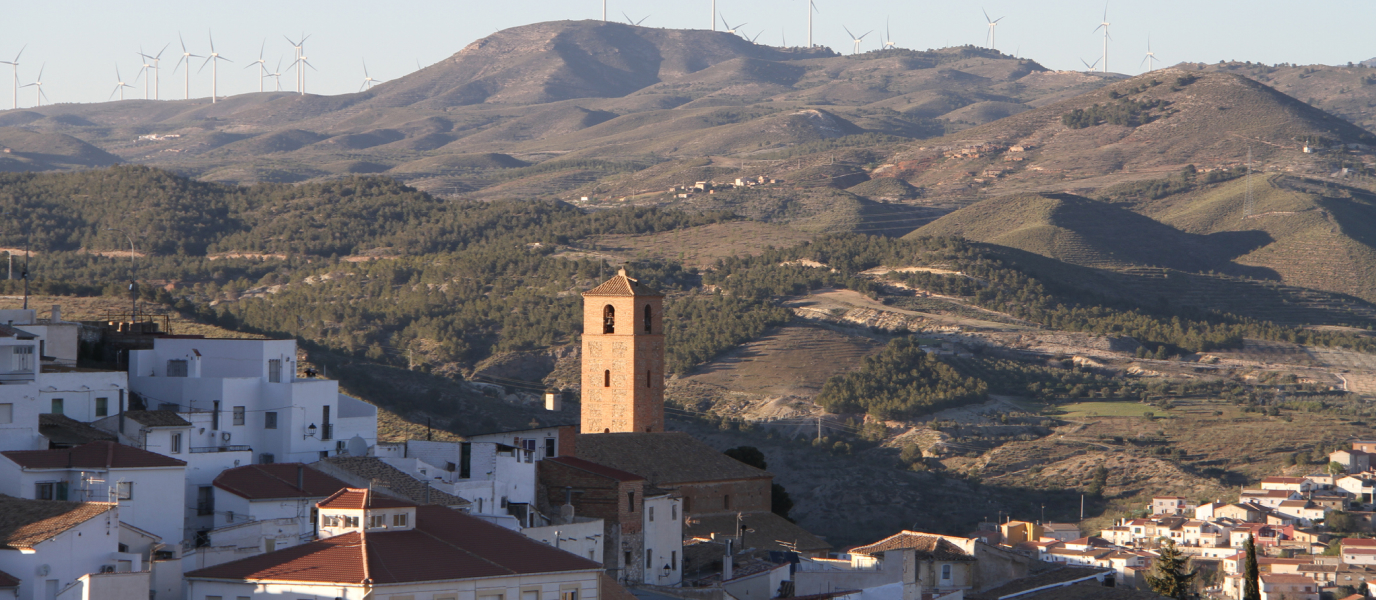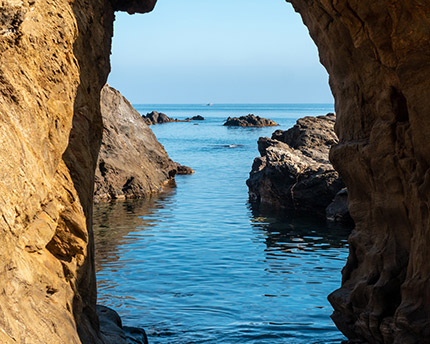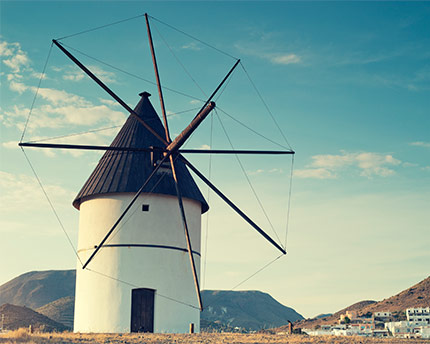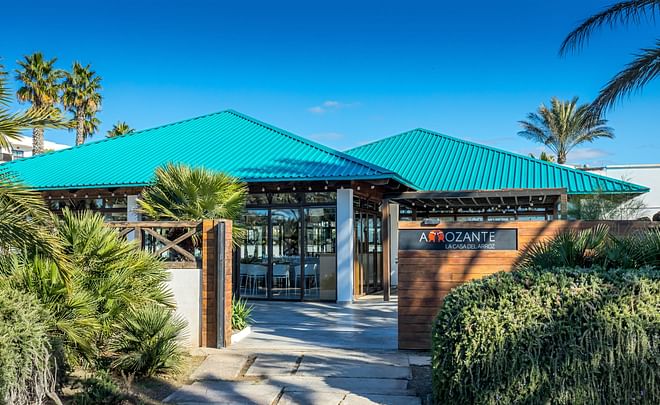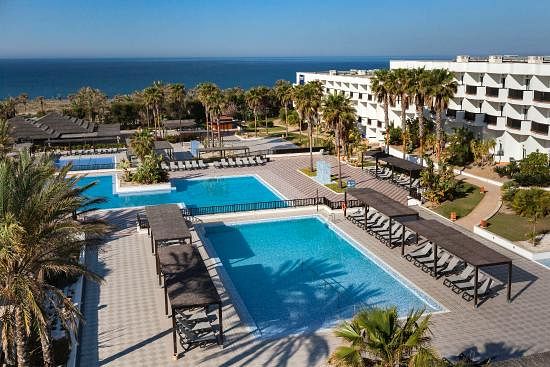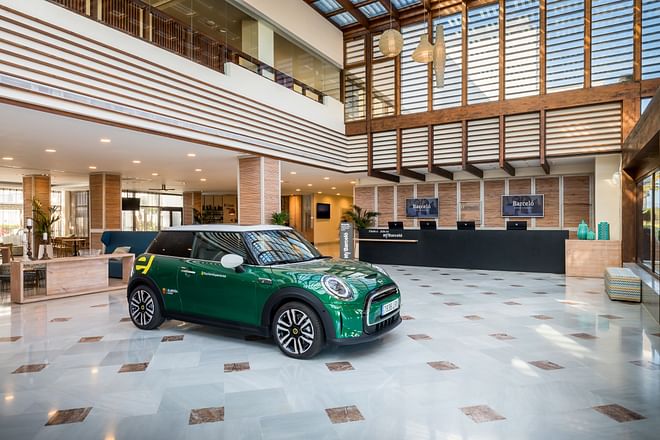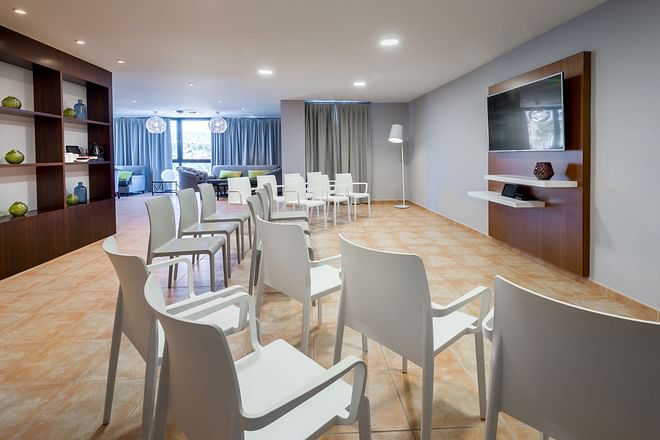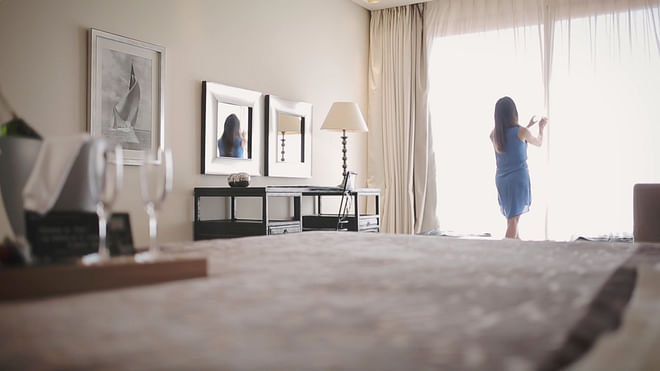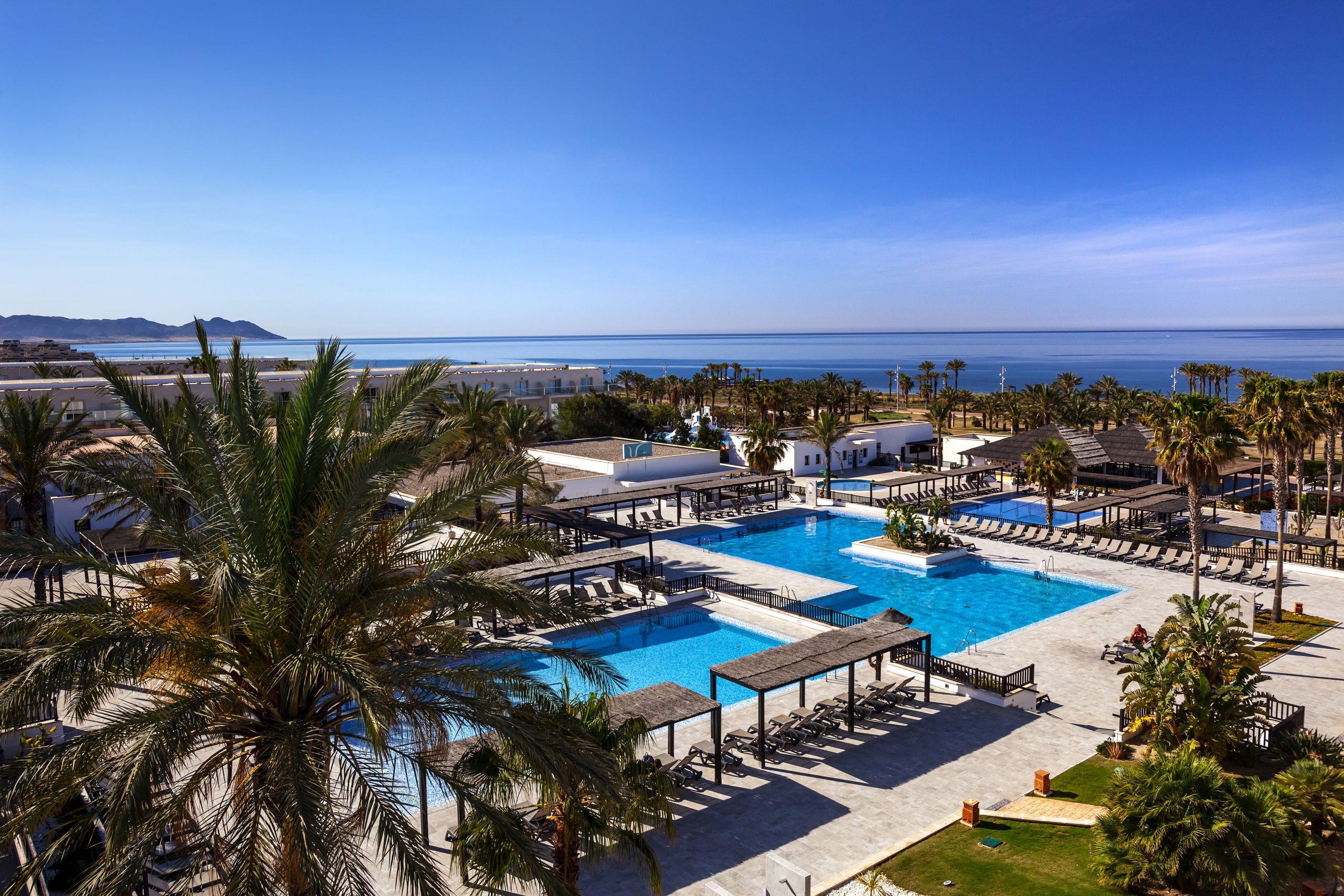Serón lies in the heart of the Almanzora valley, the comarca that covers the north-east of the province of Almería. The area has a variety of scenery and a series of little white towns scattered across the landscape and lending it a touch of colour.
Colours range from the whitewash of the houses and the grey and white of the Macael marble, through to the ochre of Spain’s driest province — not forgetting the touches of green added by the vegetation that grows around Serón, on the northern slopes of the foothills of the Sierra de los Filabres.
Serón is one of the Almanzora valley’s most recognisable settlements. Our journey will take us into this little town, where we will learn something of its history and of the main attractions that you can visit.
The history of Serón: from Nazari fortress to important mining centre
Serón was founded by the Nazaris in the thirteenth century as a defensive fortress, as the Almanzora area was the Kingdom of Granada’s eastern frontier. The castle still survives and is the town’s most important historical monument. Serón fell into Christian hands in 1489, during the War of Granada, and entered a new era in its history.
Serón would not experience a period of growth until the industrialisation of the nineteenth century. The presence of iron in the area began to attract foreign companies to mine and refine the mineral, which would then be transported by rail to the coast for export.
The industry was an important factor in the arrival of the railway in Serón. The now disused Serón railway station was built as a loading bay on the Lorca-Baza line, the well-known Almanzora railway, which had a branch line to the port of Águilas. The closure of the mines in the 1970s let to the decline of the railway line, leading to its eventual closure in 1985.
This decline is reflected in Serón’s population figures, which have fallen from 9,000 inhabitants in the 1930s to barely 2,000 today.
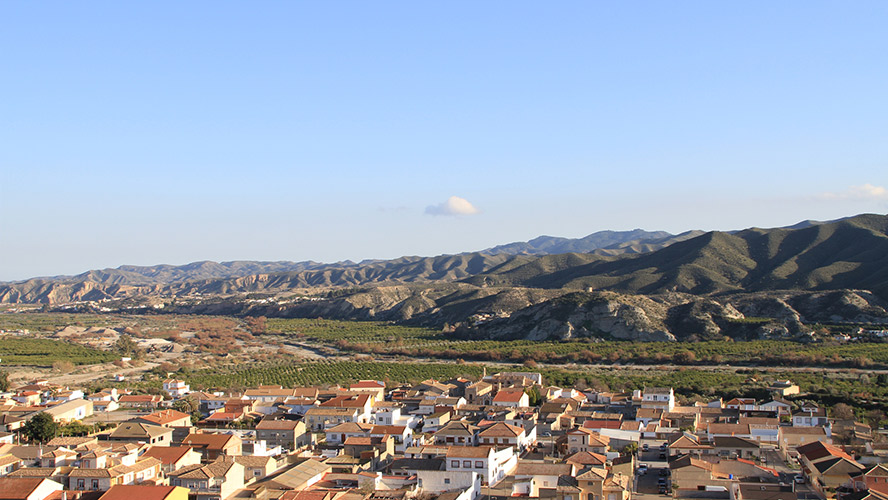
What can you see in Serón
The origins and history of Serón become evident during a simple stroll around its streets. The castle, the street known as Calle Real, and the town’s mining past can be seen in the various points of interest which we describe below.
The Nazari Castle
The Castle built by the Nazaris is Serón’s main historic monument, and one of the Almanzora valley’s outstanding fortresses. It stands at the highest point of the town’s historic quarter, and provides a striking contrast to the typical white houses. However, only a small part now remains of the fortress that brought the town into being.
You can walk up to the upper esplanade, on which stands a clock tower built in a neo-Mudejar style early in the twentieth century, and from there you can admire views of the area.
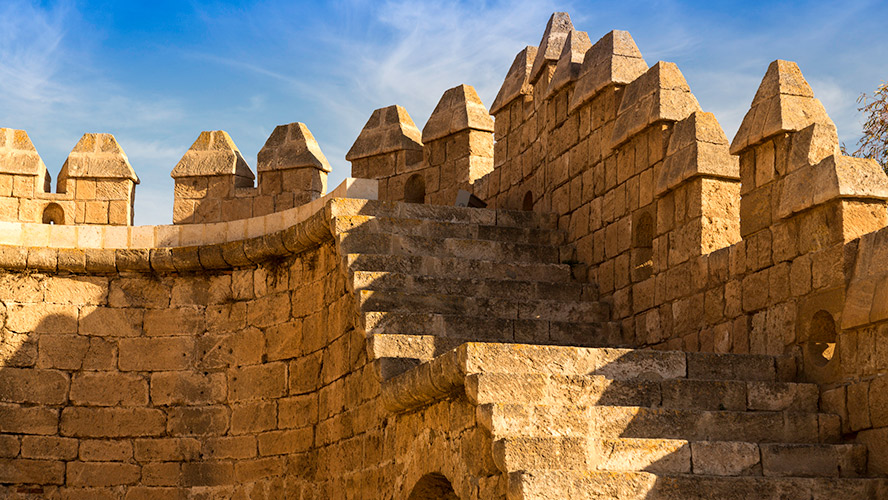
Calle Real
Calle Real surrounds Serón’s historic quarter, and is a charming street to stroll along. Here you will find examples of mansions dating from the town’s late-nineteenth-century heyday. You can even catch a few glimpses of the contemporary Modernista architecture.
Iglesia de la Anunciación
Far back in the old quarter stands the Iglesia de la Anunciación, a seventeenth-century church which has been designated a Monument of Artistic and Historical Interest. The building’s impressive size is emphasised by its bell tower.
The church has a rectangular floor plan, and inside are three naves separated by slender pillars. Outstanding features are the high chapel and the domed baptismal chapel
Hermitages in the local area
Apart from the Iglesia del la Anunciación itself, a series of small, but interesting, hermitages are to be found, both in the centre of Serón and in the surrounding area. One of these is the nineteenth-century hermitage of Los Remedios, noteworthy for its sober, typically white exterior.
A little further away from the town is the Virgen de la Cabeza hermitage, which occupies a privileged, elevated position offering stunning views over the Almanzora valley.
The Santa Bárbara hermitage has links with Serón’s mining past, as Santa Bárbara was the patron saint of miners. It was built in 1911 by a German engineer in the Las Menas area. Its architecture leaves no doubt as to the origins of its creator, as its style is undiluted Central European with a classic spire.
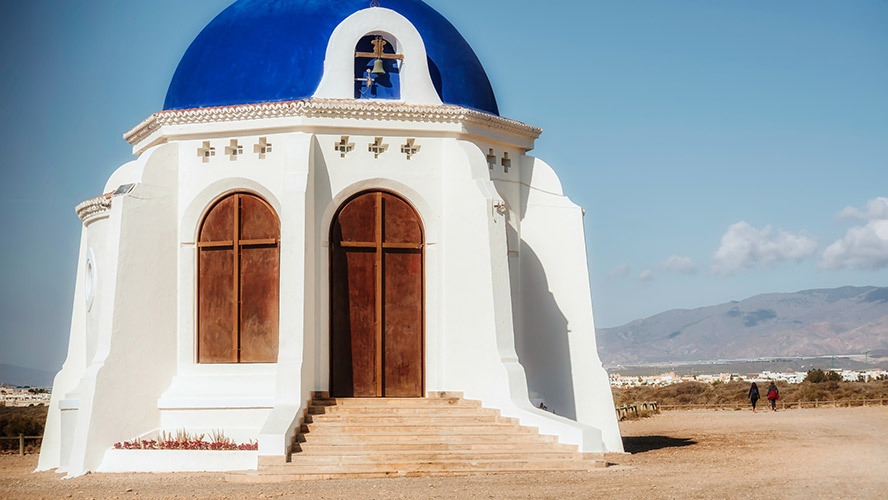
Vía Verde del Hierro
Here, in common with many other places in Spain, disused railway lines have been reborn as ‘vías verdes’, convenient walking or cycling routes which, in some cases, still retain traces of their industrial or railway heritage.
In the municipality of Serón, you can enjoy the Vía Verde del Hierro, which follows the route of the former Almanzora railway. The route is 11.8 kilometres with only a gentle gradient; it circles the banks of the river Almanzora, and here you will find three loading bays for iron and several railway buildings.
Where to eat in Serón
Serón is traditionally known for its ham, cold meats of all kinds, cheeses, honey and wines, which you can sample and buy in various establishments in the town. You can also visit a number of bars and restaurants, such as the following:
- La Estación de Serón: nowadays, the old railway station houses a restaurant offering a range of Spanish dishes. A very special building, which has been perfectly restored.
- Restaurante Plaza Nueva El Pinche: in the heart of Serón you will find this, one of the town’s best-known restaurants, serving beautifully presented tapas and meals.
- Casa Pedro: a family-run restaurant serving home-cooked traditional dishes in generous portions.
What to see in the surrounding area
The Almanzora valley and its many towns and villages provide the opportunity for an excellent excursion from Serón. Your visit will not be complete unless you explore a few more of the area’s towns, such as Albox, Bacares, Macael, Olula del Río, Líjar, or Tíjola.
Nor would you want to miss a visit to some of the viewing points which offer views over the valley and the Sierra de los Filabres. It is also worth taking a closer look at the mining heritage of the entire comarca, by taking in some of the former mines and quarries scattered across the area.
